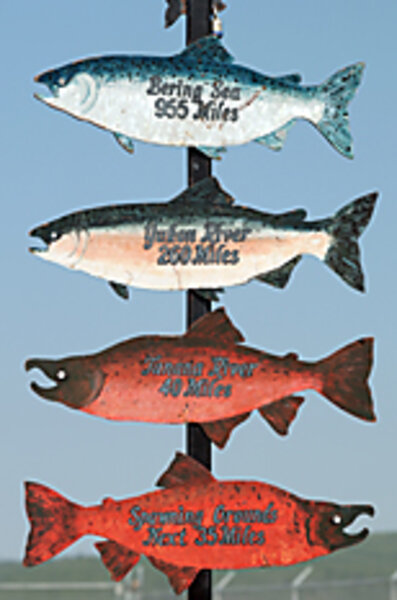Salmon: the king of fish
Loading...
| PLYMOUTH, MASS.
Salmon is called the king of fish. With its steely, silver skin, as shiny as King Arthur's armor, it even looks the part. But it's the dinner table, not the Round Table, where it really makes a splash. Baked, stuffed, poached, broiled, grilled, fried, smoked – salmon can take the heat. It can take the cold as well in the form of mousse and gravlax, a traditional way of curing salmon in Sweden.
Literally, grav means grave, and lax is salmon. The Vikings wrapped salmon in seaweed and buried it for days in the cold beach sands of Scandinavia. You can get the same results in your refrigerator without getting sand in your sandals.
Although some salmon spend their lives in landlocked freshwater lakes, most are anadromous, migrating from saltwater oceans to freshwater streams to spawn. Unlike many oily fish, such as mackerel and bluefish, salmon is surprisingly mild, which may account for its popularity.
One thing to consider when buying salmon: wild versus farm-raised. Briefly, farm-raised salmon contains more omega-3 fatty acids. That's a good thing. However, wild-caught salmon have fewer contaminants such as PCBs.
No Swedish smorgasbord would be complete without gravlax. The salmon must be impeccably fresh; never frozen. And don't skimp on the dill, that's what gives gravlax its distinct flavor. But be warned – although it's easy to prepare, it takes several days to cure.





